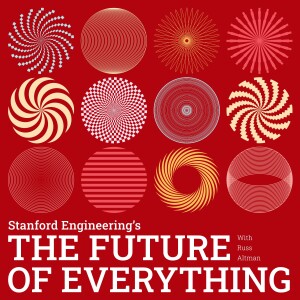
Ram Rajagopal: How the grid is becoming more human-centric
 2021-04-22
2021-04-22
Slowly but surely, the highly centralized, industrial electric grid that supplies power to the vast majority of American homes and business is changing.
Our existing system of massive power plants and huge networks of high-voltage wires is giving way to a much leaner, decentralized system of small-scale power generation on a more personal, neighborhood- or residence-level scale.
In other words, we’re going from an “infrastructure-centric” model to a “human-centric” one, says grid expert Ram Rajagopal. He says that the new grid will be much smarter, more inclusive and better able to adapt to the individual needs of users, helping them to schedule power-intensive tasks, like laundry or charging of electrical vehicles, to off-peak times of the day.
Before that day can come, however, Rajagopal says we’ll need new sorts of sensors and algorithms that will provide much more data about who, how and when people are using power, as he tells listeners to Stanford Engineering’s The Future of Everything podcast with host bioengineer Russ Altman. Listen and subscribe here.
Connect With Us:
Episode Transcripts >>> The Future of Everything Website
Connect with Russ >>> Threads or Twitter/X
Connect with School of Engineering >>> Twitter/X
More Episodes
 2024-11-01
2024-11-01
 2024-10-25
2024-10-25
 2024-10-18
2024-10-18
 2024-10-04
2024-10-04
 2024-09-27
2024-09-27
 2024-09-20
2024-09-20
 2024-09-13
2024-09-13
 2024-09-06
2024-09-06
 2024-08-30
2024-08-30
 2024-08-23
2024-08-23
 2024-08-16
2024-08-16
 2024-08-02
2024-08-02
 2024-07-26
2024-07-26
 2024-07-19
2024-07-19
 2024-07-12
2024-07-12
 2024-07-05
2024-07-05
 2024-06-28
2024-06-28
 2024-06-21
2024-06-21
Create your
podcast in
minutes
- Full-featured podcast site
- Unlimited storage and bandwidth
- Comprehensive podcast stats
- Distribute to Apple Podcasts, Spotify, and more
- Make money with your podcast
It is Free
- Privacy Policy
- Cookie Policy
- Terms of Use
- Consent Preferences
- Copyright © 2015-2024 Podbean.com




